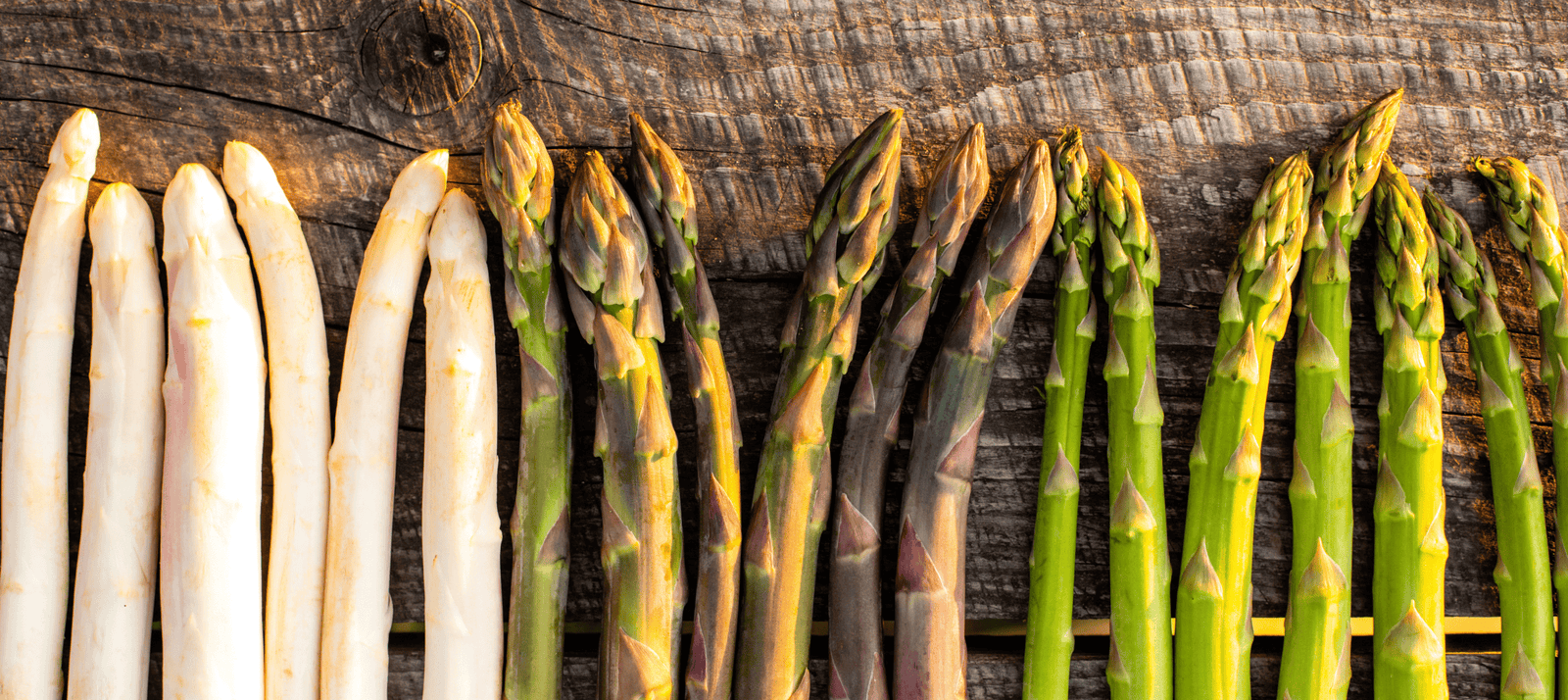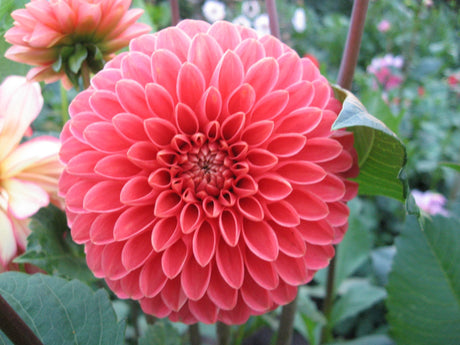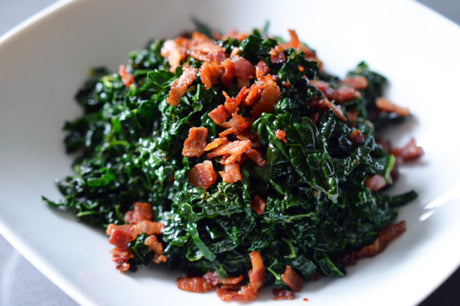Asparagus is available in various colors: white, green, and purple . Green and purple asparagus are grown the same way, only the color is different. White asparagus, however, is grown slightly differently.
Green and purple asparagus grow above ground and are exposed to sunlight, resulting in their green or purple color. Above ground, they turn green like most other plants, or purple like some plants. They generally have a more pronounced flavor and a firmer texture than white asparagus. Green and purple asparagus don't need to be peeled and are quick and easy to prepare by briefly boiling, grilling, or roasting.
White asparagus is grown underground and harvested before it has a chance to grow above ground and be exposed to sunlight. This gives it a pale white color and a delicate, mild flavor. White asparagus must be peeled before cooking, which requires a little extra time and effort. It is usually steamed, boiled, or sautéed and is a popular delicacy in many European countries.


Green and purple asparagus are much easier to grow than white asparagus because they can grow above ground. Unlike white asparagus, you don't need a raised mound or plastic sheeting to grow green asparagus. That's why we prefer to grow green asparagus.
Besides cultivation methods, appearance, and flavor, white and green asparagus also have some nutritional differences. For example, green asparagus contains more vitamins C and A, as well as more iron and fiber, than white asparagus.
Green/purple and white asparagus therefore differ in cultivation, flavor, texture, preparation methods, and nutritional value. Which one you choose depends on your personal taste and preferred preparation methods.
Try a recipe with each type to discover which one you like best!










